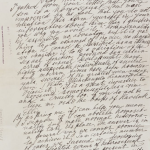Male prostitution has a rich, complex history, often intertwined with societal perceptions of masculinity, sexuality, and power. In ancient civilizations, including Greece and Rome, male sex work was not uncommon and was practiced in various forms. In Greece, young male courtesans, known as eromenos, served wealthy male patrons in arrangements that were often as much about mentorship and companionship as they were about physical intimacy. These relationships were not only accepted but were woven into the cultural fabric, signifying status, education, and the beauty of youth. In Rome, male prostitution was also recognized, although attitudes varied widely across classes and eras. While high-status men typically preferred relationships with courtesans over prostitutes, male sex workers were common among the lower classes. Ancient temples, including those of Mesopotamian, Egyptian, and certain Eastern religions, also employed male sacred sex workers, or “sacred prostitutes,” as part of their spiritual practices. Here, male prostitution was viewed as a divine service, embodying both religious and sensual experiences as part of fertility rites and ceremonies meant to honor the gods.
The Middle Ages saw more rigid regulation and moral condemnation of male sex work, with increasing influence from the Christian Church, which condemned any form of “sodomy” or same-sex relations. Male prostitution moved underground, its practitioners often subject to severe punishment if discovered. Nevertheless, it persisted in clandestine spaces, from secret brothels to royal courts. The Enlightenment and Victorian eras took diverse views on male prostitution. In the courts of Europe, young men, often termed “molly boys” or “rent boys,” discreetly served wealthy patrons. However, as homosexuality became increasingly criminalized, these men were subject to social stigma and legal consequences. Nevertheless, the practice remained resilient, especially in cosmopolitan cities like London and Paris, where nightlife fostered underground communities. In the 20th and 21st centuries, perspectives on male prostitution continue to shift, influenced by broader acceptance of LGBTQ+ identities and rights. As societies increasingly challenge stigmas and foster open discussions around sexuality, male prostitution has found varied expressions across cultures, from erotic massage parlors to online platforms. Through this history, male sex work reflects shifting attitudes toward sexuality, masculinity, and desire, serving as a testament to humanity’s complex relationship with intimacy and connection.

















